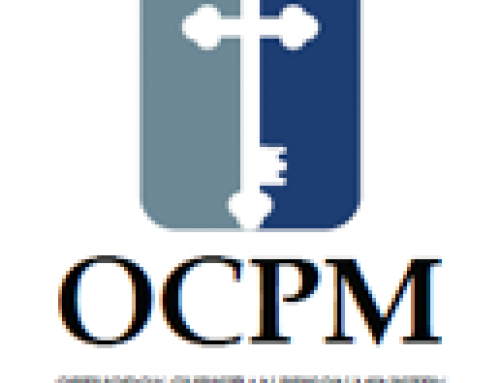This post was originally published on this site
Introduction
Of all the Saints who bore witness to Christ in the twentieth century, Saint Maria of Paris is one to remember, as she had a true understanding of the Gospel which she proclaimed to everyone she encountered. Her emphasis was love for her neighbor—she insisted that the love of God could only be lived through a radical love for the struggles of those around us. What follows here is an introduction to the beauty and wisdom taught by Saint Maria. We pray that her words provide some counsel for you and encourage you to serve your neighbor authentically and unconditionally.
Before we begin our discussion, let’s begin with 120 seconds of silence.
Take this chance to come into the presence of God and His saints as a group. Sit still. Breathe slowly and deeply. Say the Jesus prayer.
Part I: Emptying Ourselves for One Another
Reflection
It is crucial for us, as Orthodox Christians, to face the needs, sufferings, and hopes of our neighbors. It is just as important for this care to be established in the right way—on the solid foundation of God’s love that can be poured into the lives of each person we face. Christ-like love begins with self-emptying, as there is an absolute need to transfigure the drab moralism the world presents into a mystical and spiritual communion with our Lord- beginning with the emptying of ourselves.
To begin to understand this endeavor, let us look to our Lord as the ultimate example of sacrificial love, through the words of Saint Maria:
“In His worldly obedience He emptied Himself, and His emptying is the only example for our path. God who became a child, God who fled into Egypt to escape Herod, God who sought friends and disciples in this world, God who wept from the depths of His spirit over Lazarus, who denounced the pharisees, who spoke of the fate of Jerusalem, who drove out demons, healed the sick, raised the dead, who finally, and most importantly, gave His Flesh and Blood as food for the world, lifted up His Body on the cross between two thieves– when and at what moment did His example teach us about inner walls that separate us from the world? He was in the world with all His Godmanhood, not with some secondary properties. He did not keep Himself, He gave Himself without stint. ‘This is my Body, which is broken for you’—that is, given without stint. ‘This is my Blood, which is shed for you’— shed to the end…Christ’s love does not know how to measure or divide, does not know how to spare itself.” – Mother Maria, Essential Writings
Who or what can compare to the sacrificial and fulfilling love of our Lord? Saint Maria believed that the idea of sobornost gave a full understanding of our Lord giving Himself to the world. Attributed to nineteenth century Russian writers, sobornost expresses the unity and fellowship of human beings that acknowledges the uniqueness of each person in service to all. This is not a theological concept that is only for those who reach a certain level of spiritual maturity, but it is a way of life that we are all called to live. We hear it time and time again: each person is made in the image and likeness of God. But let each of us immerse in this: every single person we lock eyes with, argue with, smile at—their soul is worth more than the whole world to our great and loving God.[1]
“Who, after that, can differentiate the worldly from the heavenly in the human soul, who can tell where the image of God ends and heaviness of human flesh begins! In communing with the world in the person of each individual human being, we know that we are communing with the image of God, and, contemplating that image, we touch the Archetype—we commune with God.” – Mother Maria, Essential Writings
Authentic communion with God is found in communion with our neighbor. This communion is not accomplished solely with our best friends or our fellow parishioners but also with those who disagree with us and those that hate us. In the depths of human fallness, we must find the light of Christ. When Christ asks each one of us if we fed Him, visited Him in hospitals and prisons, and loved Him, we must be courageous enough to have acted in a way that we can honestly answer yes. If we truly believed that in every person we met, Christ Himself is approaching us, we would treat others differently. Sacrifices must be made in our time, energy, and in our own egos. In this moment of meeting, we are given a real opportunity to authentic communion with Christ through our neighbor.
Discussion Questions
- There are many popular social trends claiming to teach us what love looks like. What are some that you’ve encountered? How do they compare to St. Maria’s vision for self-sacrificing love?
- What are some practical ways to encounter Christ in our neighbor?
- What is the difference between self-emptying and being taken advantage of? How do boundaries and self-care relate to our calling to emulate Christ’s love??
Part II: Liturgy Outside the Walls of the Church
Reflection
How many times have you heard someone say, “Liturgy must continue after we leave the church?” Fascinatingly, the basis of this expression is hidden in plain sight in the celebration of the liturgy. For instance we hear, “Let us love one another, that with one mind we may confess…” and, “Thine own of Thine own we offer unto Thee, on behalf of all and for all.” Who are these “others” that we are to love with one mind? Is it simply those who are with us celebrating the liturgy? All Orthodox Christians?
Certainly not, the walls of the church are not meant to cage up our love. And as the priest proclaims our offering unto Him, on behalf of all, it is indeed all—all encounters with our neighbors sent to us by God. We believe that the sacrament of communion offers up the Body of Christ as a sacrifice for the sins of the world, and “…being in communion with this sacrificial Body, we ourselves become offered in sacrifice, “on behalf of all and for all.” – Mother Maria, Essential Writings
“In this sense, the liturgy outside the church is our sacrificial ministry in the church of the world, adorned with the living icons of God, our common ministry, an all-human sacrificial offering of love, the great act of our God-manly union, the united prayerful breath of our God-manly spirit. In this liturgical communion with people, we partake of a communion with God, we really become one flock and one Shepherd, one body, of which the inalienable head of Christ.” – Mother Maria, Essential Writings
During each of the services, the priest not only censes the icons of Christ, the Theotokos, and all the saints. He also censes the people in attendance, recognizing the image of God in each person. As each one of us leave the church building, the image of God remains in us, an image that is worthy of being venerated. The liturgy must be translated into our lives outside the church building. In fact, adorning each of our neighbors as we adorn the icons in our room, expecting to encounter God in those around us, and making personal sacrifices on behalf of the whole world is a reflection of our own unity with Christ, the God-Man.
Now, you may be thinking: how am I to actually do this? The hustle and bustle of life with classes, work, social life make this almost impossible! Saint Maria challenges each of us who may think in this way.
“It is our own sinful distraction that distracts us and our own sinful bustle that devours our concentration. We get from the world and from man what we count on getting from them.”- Mother Maria, Essential Writings
Through our own self-reflection and confession, we must confront the reality that we are letting sin cloud our ability to make space for our neighborIn small, everyday changes and honesty with our own self-centered distractibility, we will slowly be able to give more from our own selves. Not only this, we will receive more in abundance as our communion with others leads to a deepening of our communion with Him.
Let us strive to find a small beginning to our ultimate goal, something that we can all attempt to do in each of our unique lives. Guided by the words of Saint Maria:
“..Each of us is given a destiny which is no way smaller and no less tragic because it is given to us in Paris and not in Moscow. It was given to each of us to be born, to love, to have friends, to thirst for creativity, to feel compassion, justice, a longing for eternity, and to each of us will be given death. We stand before the truth of the Lord and want to fulfill its commands.” – Mother Maria, Essential Writings
Discussion Questions
- What part of the liturgy inspires you to live differently throughout the week, especially in your interactions with others?
- How does Saint Maria’s statement about distractions and bustle relate to our ability to see people for who they really are? What do you think she means about getting from the world and from man what we count on getting from them?
- Some may say that they cannot love others fully if they cannot relate to them, based on the fact that there may be too many differences that drive people apart. What do you think of this? Can one truly love another without relating to them at all? Is love the same as tolerance[2] [3] ?
- Saint Maria states that “It is necessary to build our relations to man and to the world not on human and worldly laws, but within the revelation of the divine commandment.” What do you take from this, as a young person living in today’s society?
Closing Prayer
O Holy Saint Maria of Paris, after years of doubt you found the pearl of great price. Understanding this gift of True Faith to be more precious than all else, you took up the monastic life to carry your neighbors Cross without fear of earthly consequences. Instill in our hearts also this unshakeable, curious Faith which you held in your heart to the point of martyrdom. Through your intercessions and the prayers of all the saints, may Christ our God have mercy upon us and save us, Amen.
Can you show how sobornost relates to your first paragraph about starting with sacrificial love?
Are these too many questions at once? lol
I just don’t think it’s super related to the reflection. I don’t know that we have a paragraph or quote that really challenges them to think in a new way about love v tolerance



